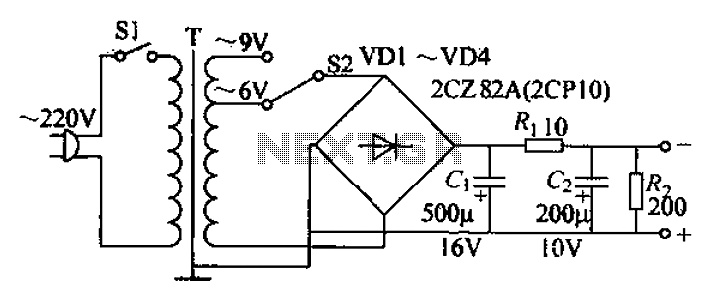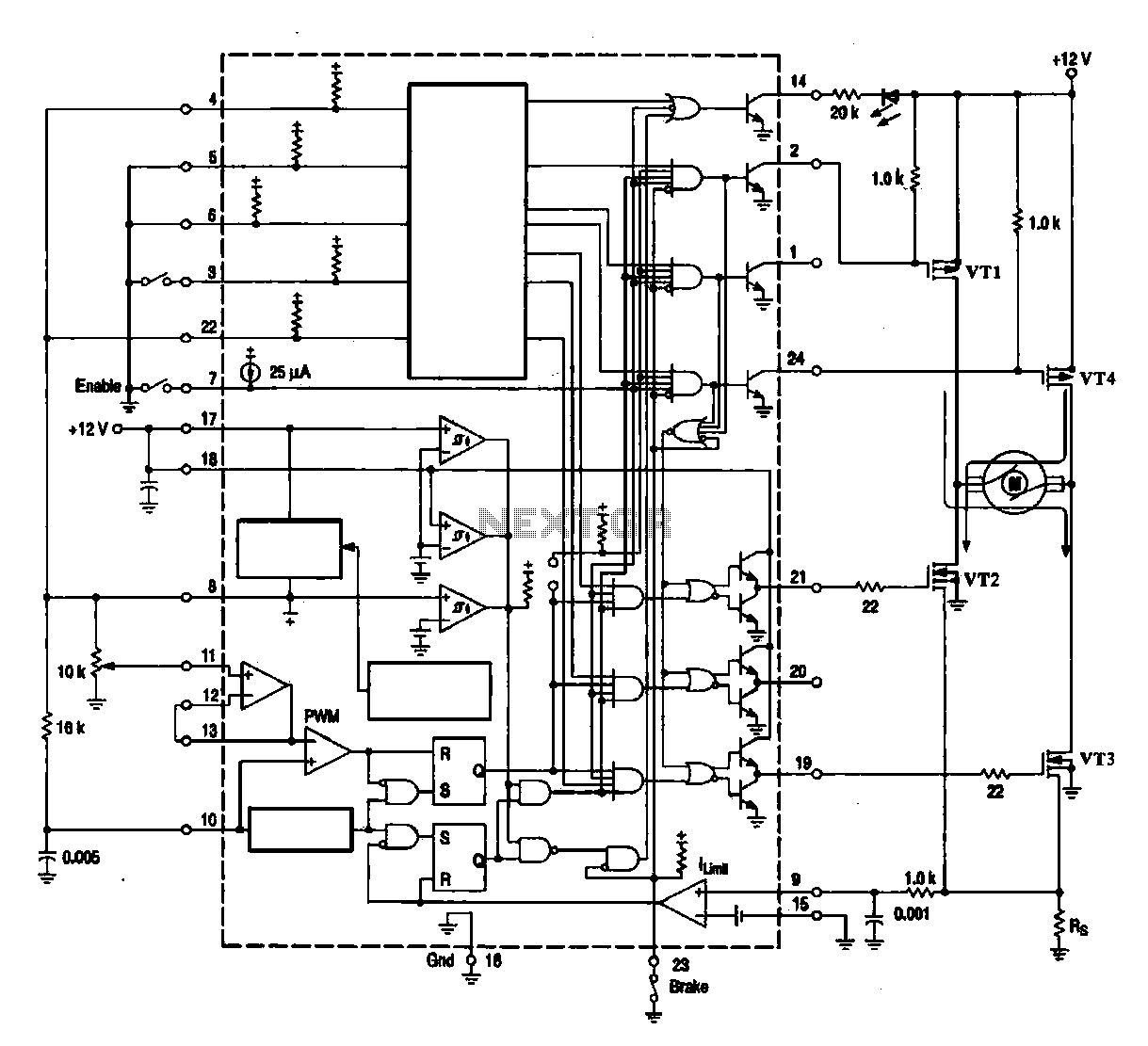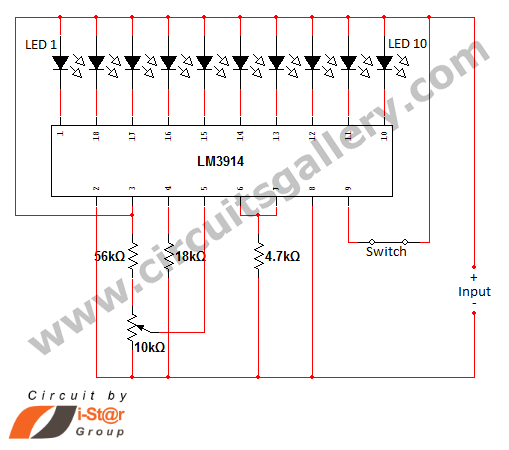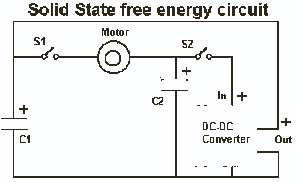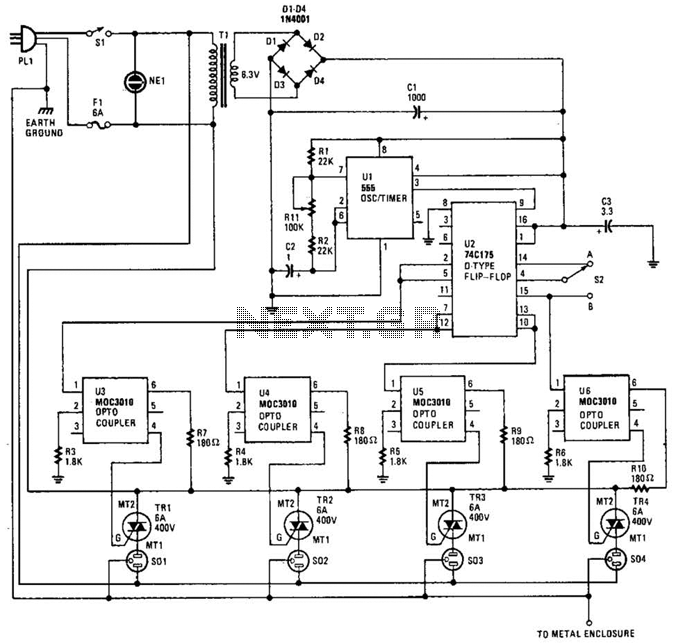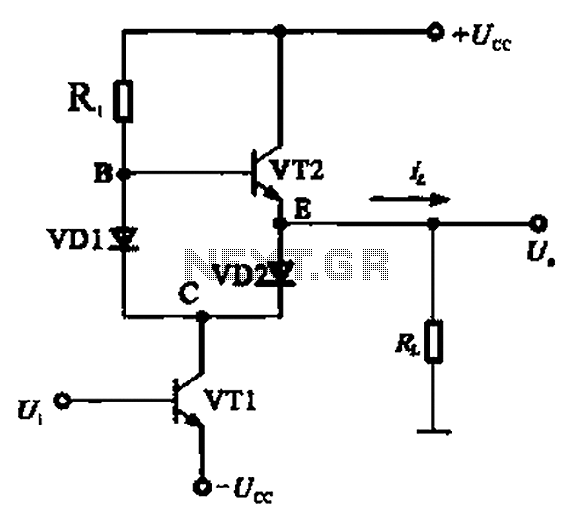
Blinker circuit one b
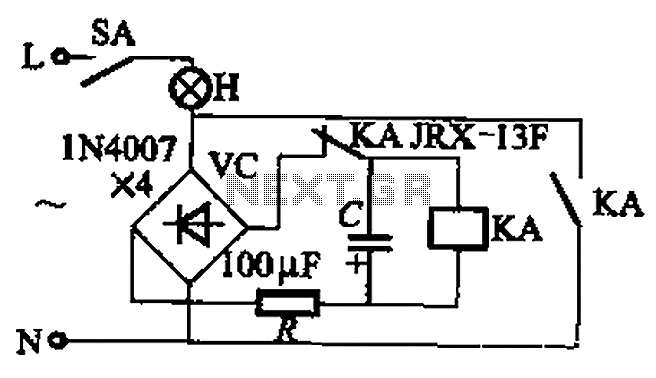
The circuit illustrated in Figure 13-3 consists of two configurations: (a) a DC power supply and (b) an AC power supply. Both configurations are utilized to control a relay. The flash frequency of the relay is determined by the resistance and the capacitance (C) associated with the relay KA capacity.
The circuit in Figure 13-3 demonstrates two distinct power supply options for relay control, which can be essential in various electronic applications. The first configuration, featuring a DC power supply, typically provides a stable voltage that can be easily regulated. This stability is crucial for applications where precise timing and control are necessary, as it ensures consistent relay operation without fluctuations.
In contrast, the second configuration employs an AC power supply, which introduces a different set of characteristics. AC power can be advantageous for certain relay types, especially those designed to operate with alternating current. The relay's activation in this scenario is influenced by the AC frequency, which can affect the timing and duration of the relay's operation.
The flash frequency of the relay is a critical parameter that defines how frequently the relay can switch on and off. This frequency is determined by the combination of resistance and capacitance in the circuit. The resistance (R) limits the current flowing through the circuit, while the capacitance (C) stores energy and influences the timing of the relay's activation. The relationship between these components can be expressed through the time constant τ (tau), which is calculated as τ = R × C. A higher resistance or capacitance results in a longer time constant, thus reducing the flash frequency. Conversely, lower values of R or C will increase the flash frequency, allowing the relay to operate more rapidly.
In practical applications, selecting the appropriate values for resistance and capacitance is essential to achieve the desired relay performance. The relay KA capacity must also be considered, as it indicates the maximum load the relay can handle without failure. This ensures that the relay operates within its specified limits, providing reliable performance in the intended application. Circuit shown in Figure 13-3. Figure 13-3 (a) DC power supply, Figure 13-3 (b) with AC power. They are used to control the relay. Flash frequency is determined by the resistanc e and capacitance C relay KA capacity.
The circuit in Figure 13-3 demonstrates two distinct power supply options for relay control, which can be essential in various electronic applications. The first configuration, featuring a DC power supply, typically provides a stable voltage that can be easily regulated. This stability is crucial for applications where precise timing and control are necessary, as it ensures consistent relay operation without fluctuations.
In contrast, the second configuration employs an AC power supply, which introduces a different set of characteristics. AC power can be advantageous for certain relay types, especially those designed to operate with alternating current. The relay's activation in this scenario is influenced by the AC frequency, which can affect the timing and duration of the relay's operation.
The flash frequency of the relay is a critical parameter that defines how frequently the relay can switch on and off. This frequency is determined by the combination of resistance and capacitance in the circuit. The resistance (R) limits the current flowing through the circuit, while the capacitance (C) stores energy and influences the timing of the relay's activation. The relationship between these components can be expressed through the time constant τ (tau), which is calculated as τ = R × C. A higher resistance or capacitance results in a longer time constant, thus reducing the flash frequency. Conversely, lower values of R or C will increase the flash frequency, allowing the relay to operate more rapidly.
In practical applications, selecting the appropriate values for resistance and capacitance is essential to achieve the desired relay performance. The relay KA capacity must also be considered, as it indicates the maximum load the relay can handle without failure. This ensures that the relay operates within its specified limits, providing reliable performance in the intended application. Circuit shown in Figure 13-3. Figure 13-3 (a) DC power supply, Figure 13-3 (b) with AC power. They are used to control the relay. Flash frequency is determined by the resistanc e and capacitance C relay KA capacity.
Warning: include(partials/cookie-banner.php): Failed to open stream: Permission denied in /var/www/html/nextgr/view-circuit.php on line 713
Warning: include(): Failed opening 'partials/cookie-banner.php' for inclusion (include_path='.:/usr/share/php') in /var/www/html/nextgr/view-circuit.php on line 713
